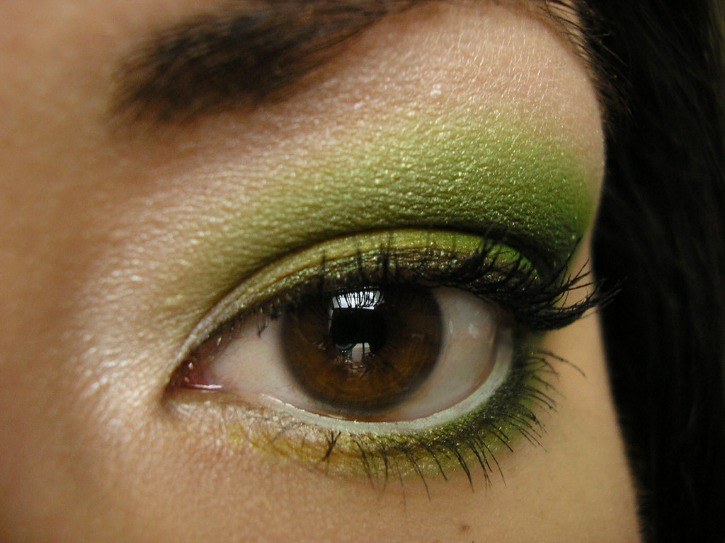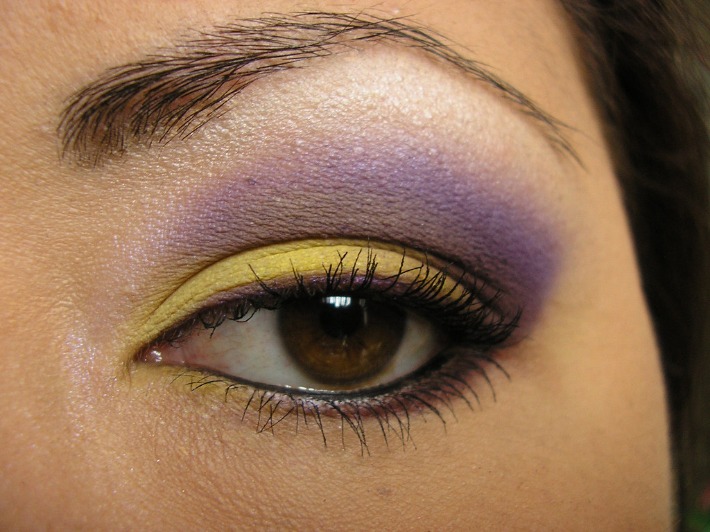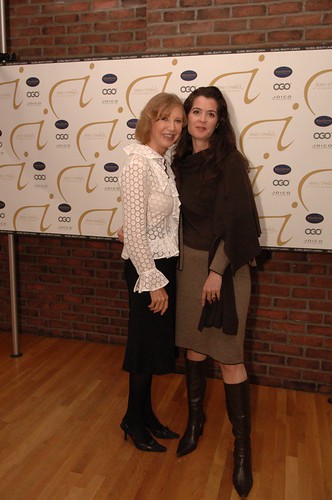Types of Foundation Makeup Powder
Foundation makeup powders are essential products in enhancing the overall look and feel of your skin. They come in various types, each designed to provide different finishes, coverage, and textures to suit individual preferences and skin types. Understanding the different kinds of foundation powders can help you select the perfect match for your makeup routine and achieve a flawless, natural look.
Loose Powder
Foundation makeup powder is an essential product used to create a smooth, even complexion and set other makeup for long-lasting wear. Among the various types, loose powder is a popular choice due to its light, breathable texture that provides a natural finish. Loose powders are typically finely milled, allowing for easy application and blendability, making them suitable for all skin types, especially oily and combination skin. They help control shine and minimize the appearance of pores while offering a matte or luminous effect depending on the formula. Other types of foundation makeup powders include pressed powders, which are compacted and more portable, offering convenience and ease of touch-ups throughout the day. Both loose and pressed powders can be formulated with additional benefits like SPF, added pigments, or skin-improving ingredients, allowing users to select based on their specific needs and preferences.
Pressed Powder
Foundation makeup powders are essential in achieving a smooth and flawless complexion, offering various types to suit different skin types and preferences. One popular type is pressed powder, which is compact and convenient for on-the-go touch-ups. Pressed powders provide a matte finish, control shine, and help set liquid foundation, making them ideal for oily or combination skin. They come in different formulations, including mineral, tinted, and translucent options, allowing users to customize their look. Pressed powders are easy to apply with a sponge or brush, offering buildable coverage from sheer to full. Overall, they are versatile and practical for achieving a polished, natural look for everyday wear or special occasions.
Mineral Powder
Foundation makeup powder comes in various types designed to suit different skin types and preferences. One popular option is mineral powder, which is made from natural minerals and is known for being lightweight and breathable. Mineral powders provide a natural finish, help control oil, and are suitable for sensitive skin. They typically contain fewer chemicals compared to traditional powders, making them a preferred choice for those seeking a more natural look. Mineral foundation powders often come in loose or pressed forms, offering versatile application options. The key benefits of mineral powder include its ability to provide a matte finish, SPF protection, and a blendable texture that enhances the skin’s natural glow.
Tinted Powder
Foundation makeup powders come in various types to suit different skin types and desired finishes. One popular category is tinted powder, which offers light coverage while adding a hint of color to even out the complexion. Tinted powders are ideal for those looking for a natural look and can be used to set makeup or as a quick touch-up throughout the day.
Types of foundation makeup powders include:
- Loose Powder: Light, airy, and finely milled, perfect for a matte finish and controlling shine.
- Pressed Powder: Compact and convenient, easy to carry and reapply, providing medium coverage.
- Mineral Powder: Made from natural minerals, suitable for sensitive skin and offering a natural, luminous finish.
- Translucent Powder: Clear and colorless, used to set makeup without adding extra coverage or color.
- Tinted Powder: Contains pigments that add a touch of color, providing light coverage and a natural glow.
Ingredients in Foundation Powder
Foundation powder is a popular cosmetic product that provides a smooth and even complexion, enhancing natural beauty. Its key ingredients work together to offer coverage, hydration, and sun protection, making it an essential item in many makeup routines. Understanding the ingredients in foundation powder can help users choose the right product for their skin type and desired finish.
Absorbent Agents
Foundation powder typically contains a variety of ingredients designed to provide coverage, durability, and a smooth finish. These ingredients often include pigments, binding agents, and absorbent agents that help control oil and shine.
- Pigments: These provide the color and coverage for the foundation, including titanium dioxide and iron oxides.
- Absorbent Agents: Ingredients such as talc, silica, and mica absorb excess oil and sweat, helping to keep the skin matte and reducing shine.
- Binders: Substances like zinc stearate or magnesium stearate help to hold the ingredients together and adhere to the skin.
- Fillers: Ingredients like kaolin or bismuth oxychloride improve the texture and application of the powder.
- Additional Additives: Sometimes, skin-nourishing ingredients like mineral oils, antioxidants, or broad-spectrum sunscreens are included for added benefits.
Pigments and Colorants
Foundation powder typically contains a variety of ingredients that work together to create an even, smooth complexion. Key components include talc or mica, which provide a soft, silky texture and help absorb excess oil. These powders may also include fillers like silica or zinc oxide to improve application and finish. Additionally, binders such as dimethicone or silica powder help ensure the powder adheres well to the skin. Pigments and colorants are added to match different skin tones and provide coverage. Common pigments include iron oxides, titanium dioxide, and ultramarines, which are safe colorants approved for cosmetic use. These colorants help in achieving the desired shade, opacity, and finish of the foundation powder, ensuring a natural look while offering various levels of coverage and skin protection.
Binders and Stabilizers
Foundation powder typically contains a variety of ingredients that contribute to its texture, longevity, and finish. The primary components include pigments for color, fillers for smooth application, and binders and stabilizers to maintain cohesiveness and stability of the product.
Binders in foundation powder often consist of ingredients like silica, alumina, or natural waxes, which help the powder adhere evenly to the skin and improve its durability throughout the day. These substances assist in creating a uniform, flawless finish by minimizing the appearance of fine lines and pores.
Stabilizers are added to prevent the separation of ingredients and ensure the product remains consistent over time. Common stabilizers include talc, magnesium stearate, and various other mineral derivatives that help maintain the texture, prevent caking, and extend the shelf life of the foundation powder.
Moisturizing Components
Foundation powder typically contains a variety of ingredients that provide coverage, texture, and longevity while ensuring skin comfort. Moisturizing components are included to maintain skin hydration and prevent dryness, making the product suitable for different skin types.
- Talc or Mica – Provides a smooth texture and helps in absorption
- Kaolin Clay – Offers oil control and a matte finish
- Silica – Enhances adhesion and gives a silky feel
- Binders – Such as zinc/stearates to improve adhesion to skin
- Colorants – Iron oxides and titanium dioxide for pigmentation and SPF protection
- Moisturizing components:
- Glycerin – Draws moisture into the skin
- Vitamins E and C – Provide antioxidant benefits and support skin hydration
- Aloe Vera Extract – Soothes and moisturizes the skin
- Caprylic/Capric Triglyceride – Emollient that enhances skin softness
Benefits of Using Foundation Powder
Foundation powder is a popular makeup product valued for its versatility and natural finish. It provides a smooth, matte look while helping to even out skin tone and conceal imperfections. Additionally, foundation powder is easy to apply and blend, making it a convenient choice for quick daily routines. Its lightweight texture offers a breathable feel and can help control oil, leaving the skin looking fresh and flawless throughout the day.
Matte Finish
Using foundation powder with a matte finish offers numerous benefits for your makeup routine. It helps control excess oil and shine, providing a long-lasting, matte appearance throughout the day. The powder formulation eases application and blending, resulting in a smooth, even complexion while minimizing the appearance of pores and imperfections. Additionally, it offers a lightweight feel, making it comfortable for daily wear without feeling heavy or cakey. A matte finish helps achieve a sophisticated, natural look that stays put, making it ideal for various skin types and occasions.
Buildable Coverage
Foundation powder offers numerous benefits, making it a popular choice for many individuals seeking a versatile makeup product. One of the key advantages is its ability to provide a natural, matte finish that enhances your complexion without appearing heavy or cakey. Additionally, foundation powder offers buildable coverage, allowing you to customize your look from light to full coverage depending on your preferences and needs. This flexibility makes it suitable for various occasions, whether you want a subtle everyday look or a more polished, glamorous appearance. Furthermore, its portability and quick application make it an ideal option for touch-ups throughout the day. Overall, foundation powder combines convenience with customizable coverage, helping you achieve a flawless, confidence-boosting look effortlessly.
Portability and Convenience
Foundation powder offers numerous advantages, making it a popular choice for many makeup enthusiasts. Its portability and convenience are key features that enhance the overall makeup experience.
- Easy to carry around, perfect for touch-ups on the go
- Quick application without the need for brushes or sponges
- Ideal for busy lifestyles, allowing effortless reapplication throughout the day
- Compact packaging makes it travel-friendly and space-saving
- Provides a matte finish and absorbs excess oil, keeping your complexion refreshed
- Can be applied over liquid foundation for additional coverage or set makeup easily
Versatility for Touch-Ups
Foundation powder offers numerous benefits that make it a popular choice for many makeup enthusiasts. Its lightweight texture ensures a natural finish while providing essential coverage. Additionally, it helps to control shine throughout the day and can be easily built up for more coverage if needed. The versatility of foundation powder makes it an excellent option for quick touch-ups, ensuring your look remains fresh and flawless at all times.
- Provides a natural, matte finish that reduces shine and controls oil
- Easily buildable for light or full coverage based on preference
- Convenient for on-the-go touch-ups, maintaining a polished look throughout the day
- Suitable for various skin types, including oily and combination skin
- Can be paired with other makeup products for versatile looks, from everyday to special occasions
How to Choose the Right Foundation Powder
Choosing the right foundation powder is essential for achieving a flawless and natural look that enhances your skin’s beauty. With so many options available, understanding your skin type, undertone, and preferred finish can help you make an informed decision. The right foundation powder can provide coverage, even out your complexion, and boost your confidence every day.
Matching Skin Tone
Choosing the right foundation powder is essential for achieving a natural and flawless look. The key is to find a shade that seamlessly matches your skin tone, ensuring an even complexion without looking cakey or artificial.
To start, determine your undertone—whether it is cool, warm, or neutral. Cool undertones often have pink or rosy hues, while warm undertones tend to have yellow, golden, or peach hues. Neutral undertones are a balanced mix of both. Next, test foundation powders in natural light by swiping them along your jawline or the side of your face to see which shade disappears into your skin seamlessly.
Choose a shade that blends perfectly with your skin tone, rather than one that is too light or too dark. Remember that your skin tone may vary slightly across different areas, so opt for a shade that closely matches the most prominent parts of your face. Additionally, consider the finish you prefer—matte, satin, or dewy—and select a powder formula that complements your skin type and desired look.
Finally, always patch-test new foundation powders to check for any allergic reactions or changes in appearance over a few hours. Regularly updating your foundation shade as your skin tone changes with seasons ensures a natural, harmonious look year-round.
Considering Skin Type
Choosing the right foundation powder begins with understanding your skin type, as this will guide you toward the most suitable product for a flawless look. Whether your skin is oily, dry, combination, or sensitive, selecting a powder formulated to meet your specific needs is essential for comfort and longevity.
If you have oily skin, opt for a matte-finish foundation powder that controls shine and absorbs excess oil throughout the day. Look for powders labeled as oil-free or designed for mattifying effects. For dry skin, choose a hydrating or luminous powder that adds moisture and enhances your skin’s natural glow, often containing nourishing ingredients like vitamins or aloe vera.
For combination skin, a balanced approach works best—consider a powder that provides a matte finish in oily areas while offering a more luminous or moisturizing effect on drier patches. Sensitive skin requires hypoallergenic and fragrance-free powders to minimize irritation; mineral-based powders are often an excellent choice because of their gentle formulation.
Additionally, test shades in natural lighting to ensure the color matches your skin tone seamlessly. Applying a small amount and observing how it blends into your skin can help you pick the most natural-looking shade. Remember that the right foundation powder not only enhances your appearance but also complements your skin’s health and comfort throughout the day.
Assessing Coverage Needs
Selecting the right foundation powder begins with assessing your coverage needs to achieve a natural or more polished look. Consider whether you prefer a lightweight, sheer finish or full coverage to conceal imperfections. Light coverage powders are ideal for daily wear and for those with flawless skin who want a subtle enhancement, while medium to full coverage powders suit those seeking to conceal blemishes, scars, or uneven skin tone. Evaluate your skin type as well; oily skin may benefit from matte, oil-absorbing powders, whereas dry skin may require hydrating formulas to avoid a cakey appearance. Testing shades in natural light and choosing a color that matches your skin tone ensures a seamless, natural finish. Ultimately, understanding your coverage preferences and skin type will guide you in selecting the perfect foundation powder for a flawless look.
Formulation Preferences
Choosing the right foundation powder depends on understanding your skin type and formulation preferences. It’s essential to select a product that complements your skin’s needs, whether it’s oily, dry, sensitive, or combination. Consider the finish you desire, such as matte, satin, or dewy, to achieve the look you want. Pay attention to formulation preferences, whether you prefer a pressed or loose powder, as this can affect application and blending. Additionally, look for powders with ingredients suited to your skin, such as hydrating components for dry skin or oil-absorbing properties for oily skin. Testing shades in natural light can help ensure a seamless color match, providing a natural and flawless appearance.
Application Techniques
Application techniques play a crucial role in achieving a flawless and natural look with foundation makeup powder. Proper methods ensure even coverage, enhance the skin’s texture, and help the makeup last longer throughout the day. Mastering these techniques can make a significant difference in creating a smooth, radiant complexion that complements your individual style and preferences.
Tools for Application
Application techniques and tools are essential for achieving a flawless finish with foundation makeup powder. To begin, ensure your skin is clean and prepped with moisturizer to create a smooth surface. Use a fluffy powder brush for a light, even application by swirling the brush in the powder and tapping off excess before gently sweeping it across your face. For targeted coverage or a more matte finish, a dense kabuki brush can be used, pressing the powder into the skin. Alternatively, a damp beauty sponge can provide a more airbrushed look when pressed lightly onto the face. Applying foundation powder in thin layers allows for better control and a natural appearance. Always blend well around the jawline and edges to avoid harsh lines, and finish by setting your makeup with a light dusting to ensure longevity throughout the day. The choice of tools and application techniques can be tailored based on your desired coverage and skin type for optimal results.
Step-by-Step Application Process
Applying foundation makeup powder requires a step-by-step process to achieve a smooth and flawless finish. Start by cleansing and moisturizing your face to create a clean base. Next, select the right shade of powder that matches your skin tone. Using a clean, fluffy brush or a makeup sponge, lightly dip into the powder and tap off any excess. Begin applying the powder to your face starting from the center and blend outward in gentle, circular motions. Make sure to cover all areas evenly, including your forehead, cheeks, nose, and chin. For a more matte look, layer the product gradually, building up coverage where needed. Pay special attention to areas prone to oiliness to control shine. Finish by checking your application in natural light and blending any harsh lines for a seamless finish. This step-by-step technique helps create a natural, long-lasting foundation look with powder makeup.
Tips for a Flawless Finish
Achieving a flawless foundation makeup powder application requires attention to detail and the right techniques. Start by preparing your skin with a clean, moisturized face to create a smooth base. Use a primer suited to your skin type to help the powder adhere evenly and stay put longer. When applying the foundation powder, use a fluffy brush or a dense kabuki brush for a more polished look. Lightly dip the brush into the powder, tapping off any excess before applying. Use sweeping or circular motions to blend the powder seamlessly into your skin, focusing on areas that need extra coverage. Build up coverage gradually to avoid a cakey appearance. For final touches, use a clean brush or a beauty sponge to blend edges and ensure a natural finish. Setting with a translucent setting spray can enhance longevity and give a fresh, dewy glow, completing your flawless foundation makeup powder look.

Maintaining and Fixing Foundation Powder
Maintaining and fixing your foundation powder is essential for achieving a flawless, long-lasting makeup look. Proper care ensures that the powder stays fresh, blends seamlessly, and maintains its its original texture. Whether dealing with creasing, fading, or uneven application, understanding how to properly keep and repair your foundation powder can significantly enhance your overall makeup routine and appearance.
Setting the Makeup
Maintaining and fixing foundation powder is essential for ensuring your makeup stays flawless throughout the day. Proper care and application techniques can help prolong the wear of your powder and keep your complexion looking smooth and natural.
- Begin with a clean, moisturized face to create a smooth base for your foundation powder.
- Use a clean brush or sponge to pick up an even amount of powder and apply it gently in pressing or circular motions.
- To fix or set your foundation powder, lightly dust a translucent setting spray over your face after application.
- If your powder starts to look cakey or patchy, remove excess product with a soft brush and reapply in light layers.
- For touch-ups during the day, blot your face with a tissue to remove excess oil before reapplying a thin layer of powder.
- Store your foundation powder in a cool, dry place to prevent it from clumping or deteriorating.
- Replace your powder regularly to avoid bacteria buildup and maintain a fresh, clean application.
Touch-Up Tips
Maintaining and fixing your foundation powder throughout the day is essential for a flawless and fresh look. Proper touch-up techniques help to keep your base looking smooth, even, and natural, preventing shine and cakey appearance.
- Use a clean, fluffy brush or a powder puff to gently reapply the powder to areas that have become oily or shiny, focusing on the T-zone and any other areas prone to oiliness.
- Apply a light, translucent setting powder to set your foundation and reduce excess shine without adding extra coverage.
- For quick fixes, keep blotting papers handy to absorb excess oil before applying powder, ensuring a smoother finish.
- If your foundation has started to fade or look patchy, gently blend in a small amount of fresh powder, using a sponge or brush, to revive your base.
- When touching up, avoid overapplying powder to prevent a cakey or unnatural finish; build coverage gradually for a seamless look.
- For a more luminous or matte effect, choose a powder that complements your skin type and preferred finish, and apply sparingly to maintain a natural glow or matte appearance.
Cleaning and Storage of Tools
Maintaining and fixing foundation powder, along with proper cleaning and storage of tools, is essential to ensure a flawless application and prolong the life of your makeup products. Proper care helps prevent bacteria buildup and maintains the quality of your foundation powder.
To keep your foundation powder in optimal condition, follow these maintenance tips:
- Use a clean, fluffy brush or sponge each time to avoid contamination.
- Tap off excess powder before applying to prevent over-aplication and waste.
- If the powder becomes cakey or uneven, gently press a tissue or paper towel into the surface to remove excess or uneven layers.
- Repress the powder if it crumbles or breaks, pressing it back into the compact to restore its shape.
- Regularly check for signs of contamination or spoilage and replace the product as needed.
Cleaning and storing your tools properly is equally important:
- Wash brushes and sponges regularly with a gentle cleanser or brush shampoo to prevent bacteria buildup.
- Allow tools to fully dry before storage to avoid mold and bacterial growth.
- Store brushes upright in a clean, dry container to maintain their shape and cleanliness.
- Keep makeup products in a cool, dry place away from direct sunlight to preserve their quality.
- Avoid sharing brushes or sponges with others to prevent the spread of bacteria and infections.



